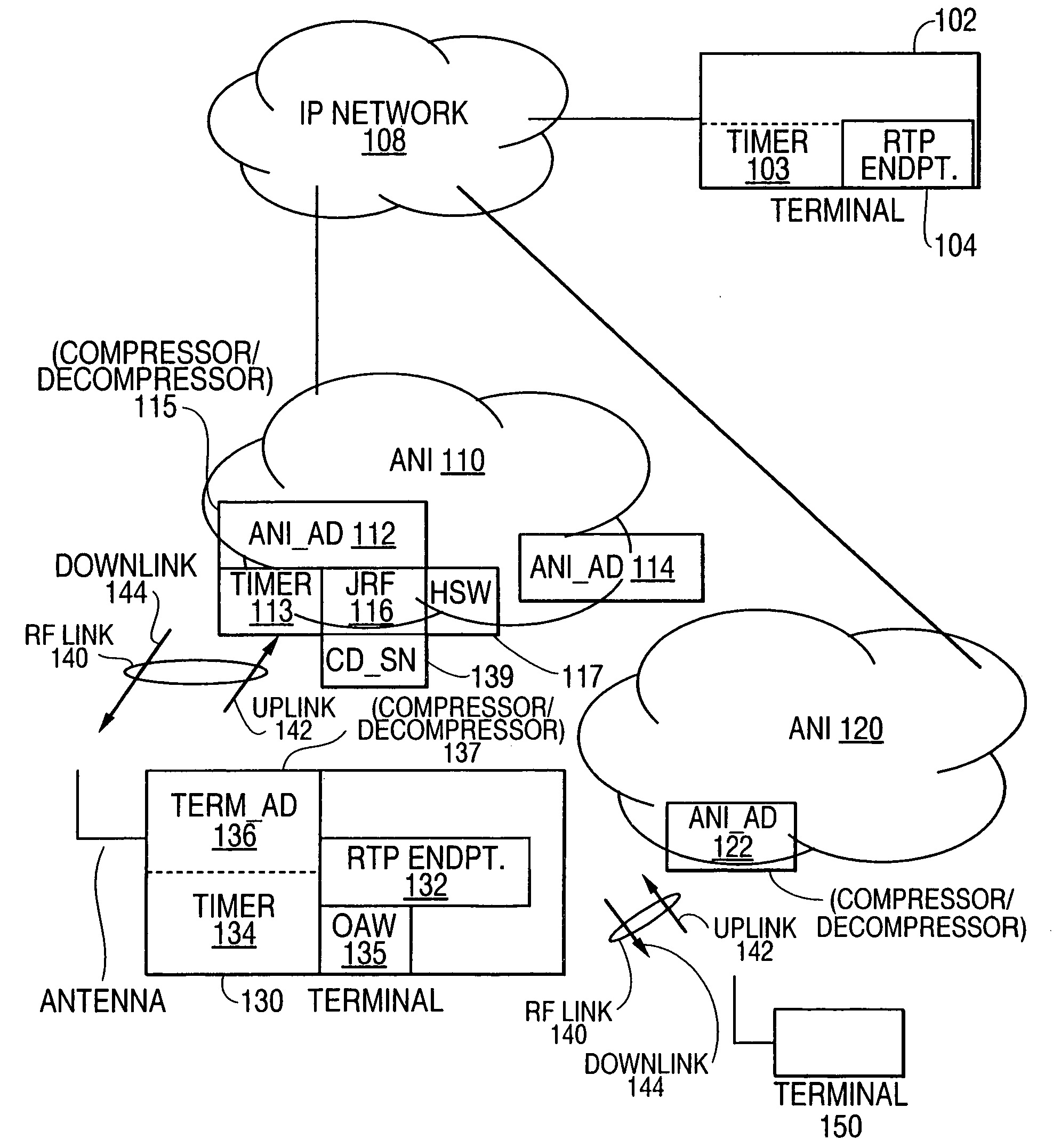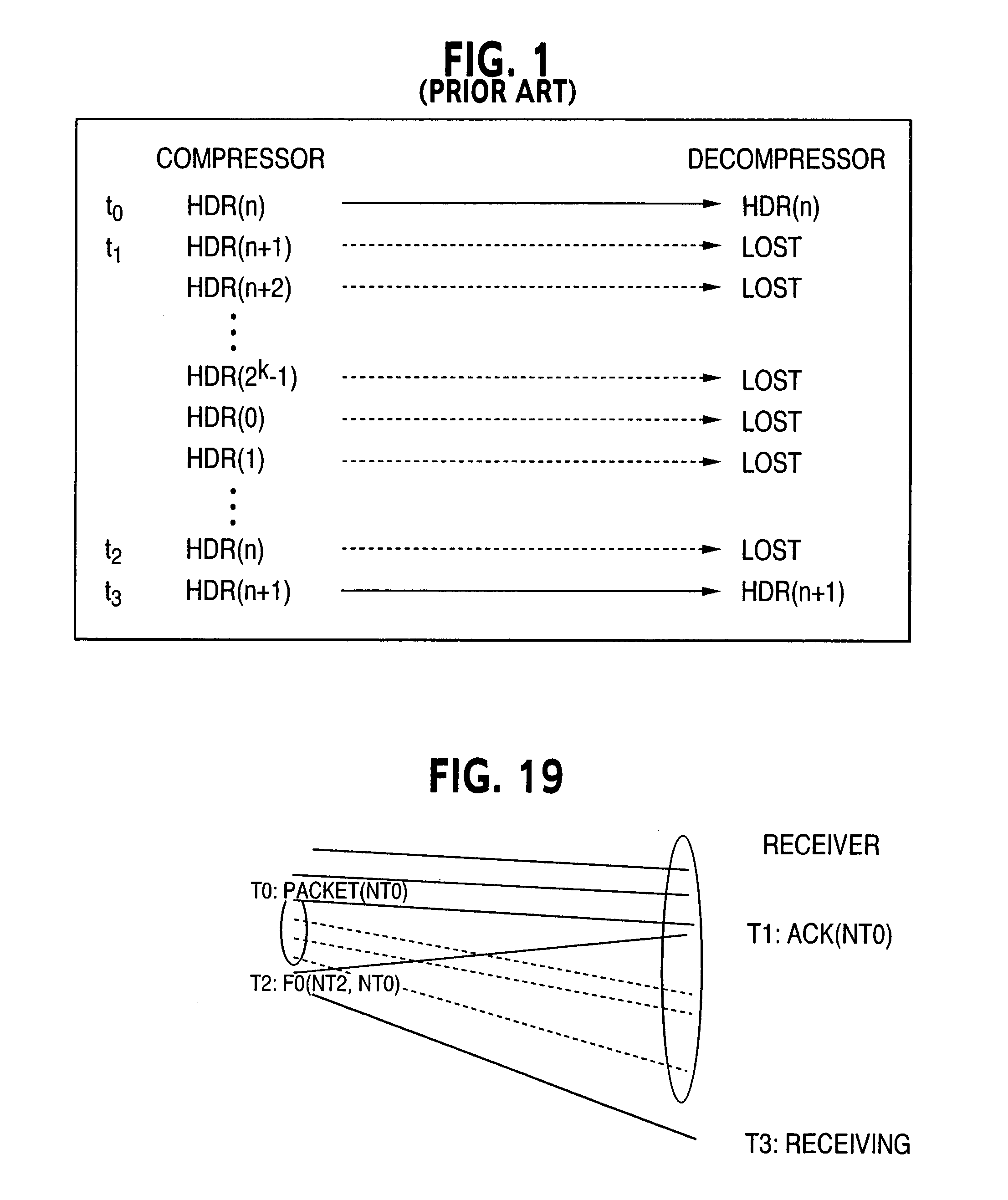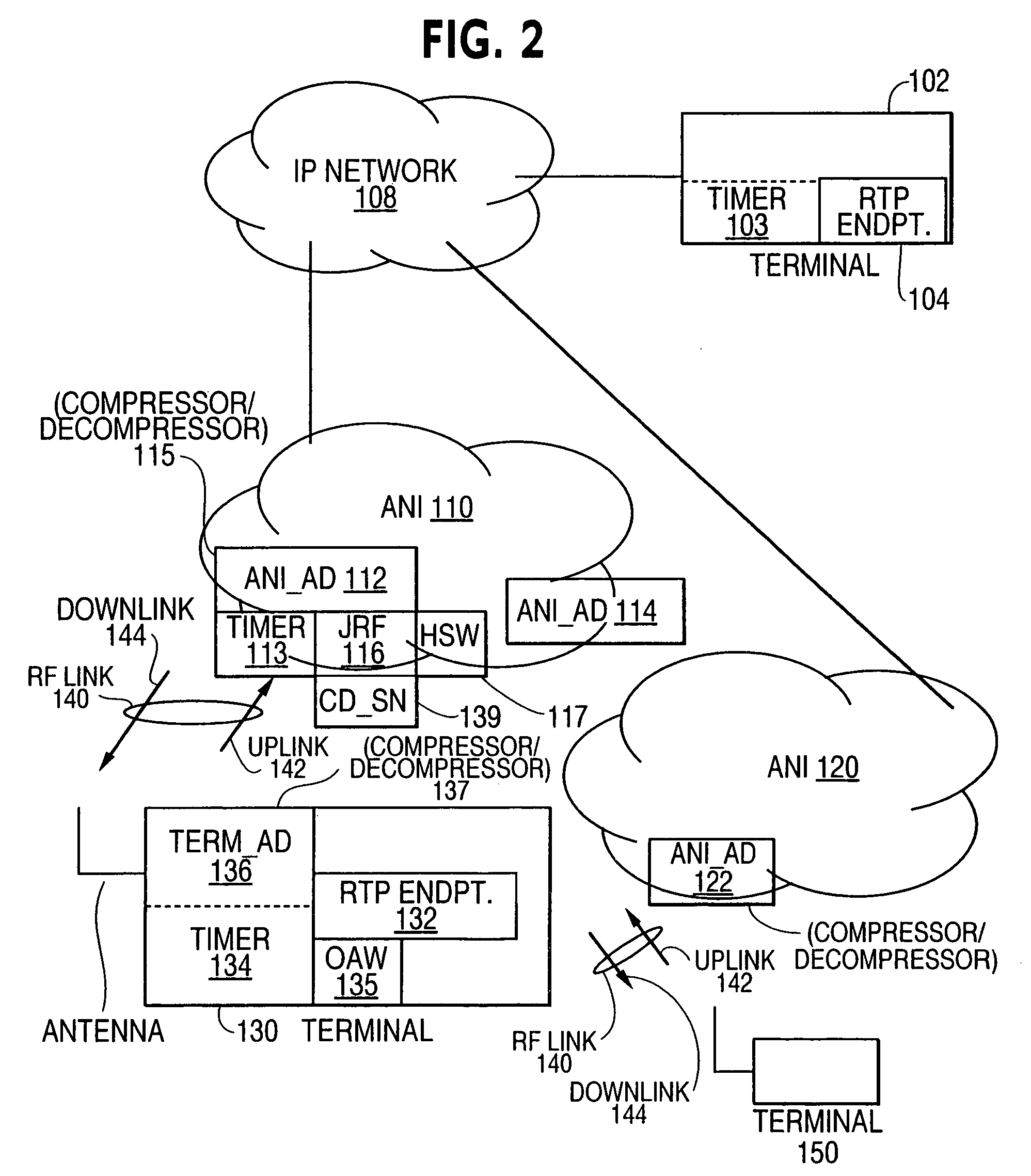Method and system for transmitting and receiving packets
a packet and header technology, applied in the field of data packet header compression and decompression, can solve the problems of inability to accurately predict information, loss of synchronization with the compressor, and no longer correctly rebuilding packets, so as to improve the performance of packet transmission and reception, and improve the transmission and reception of packets.
- Summary
- Abstract
- Description
- Claims
- Application Information
AI Technical Summary
Benefits of technology
Problems solved by technology
Method used
Image
Examples
first embodiment
[0142]the invention, which may be practiced with the system of FIG. 2, increases the probability of reception of FH and FO type packets so that there is a timely progression towards the most optimal SO state. The probability of reception may be increased by applying additional error protection to the FH and FO packets in the form of[0143]Error Correcting Codes[0144]Error Correcting Codes+Interleaving[0145]Duplicate Transmission of FH and FO header data
[0146]The first embodiment of the invention provides extra protection against loss of data packets over a lossy transmission medium, e.g. wireless without allocating additional channel resources to the compressor and decompressor. The extra bandwidth is obtained by delaying transmission of the data stream by some interval of time, ‘T’, as illustrated in FIGS. 5A and 5B, such that there is enough time to send the extra data packets. The delay interval can be used to send initial FH packets, and FO packets at any time.
[0147]Transmission ...
second embodiment
[0155]the invention, which may be practiced with the system of FIG. 2, is based upon IP / UDP / RTP fields most of the time being either constant or can be extrapolated in a linear fashion. In those instances, the compressed header just carries a multiple non extended sequence number having k bits that provides sufficient information for linear extrapolation. Like RFC 2508, with the invention when linear extrapolation results in incorrect header reconstruction, the transmitter sends FO difference information. Unlike RFC 2508, the difference information is calculated with respect to a reference packet known to be correctly received, rather than the one immediately preceding the current packet. This feature ensures that the current header can be reliably reconstructed even if one or more past packets were lost. Since the header can be reliably reconstructed in that manner, there is no need to send a full header. The reference is determined and updated by the compressor of the receiver acc...
case 1
sub>1), SO(n2)
Case 2: HDR(n1), FO(n2)
Long Loss Detection and Recovery for Case 1
[0175]To detect whether or not there is long loss in case 1, a timer (e.g. timer 134) is maintained at the compressor, and it is checked and updated whenever a packet is received.
[0176]Let[0177]T be the time when HDR(n1) is received[0178]T+ΔT be the time when HDR(n2) is received
[0179]The compressor sends SO packets only if the one or more preceding FH or FO packets have been acknowledged, and also linear extrapolation applies from the acknowledged header. Therefore, If HDR(n2) is SO and no matter what type HDR(n1) is, linear extrapolation applies from HDR(n1) to HDR(n2). This basically means that the RTP time stamp and RTP sequence number for packet n1 through n2 when generated at the compressor, closely follows a linear pattern as a function of the time of day clock. Consequently, the headers coming into the decompressor also follow a linear pattern as a function of time, but with fluctuation due to jit...
PUM
 Login to View More
Login to View More Abstract
Description
Claims
Application Information
 Login to View More
Login to View More - R&D
- Intellectual Property
- Life Sciences
- Materials
- Tech Scout
- Unparalleled Data Quality
- Higher Quality Content
- 60% Fewer Hallucinations
Browse by: Latest US Patents, China's latest patents, Technical Efficacy Thesaurus, Application Domain, Technology Topic, Popular Technical Reports.
© 2025 PatSnap. All rights reserved.Legal|Privacy policy|Modern Slavery Act Transparency Statement|Sitemap|About US| Contact US: help@patsnap.com



